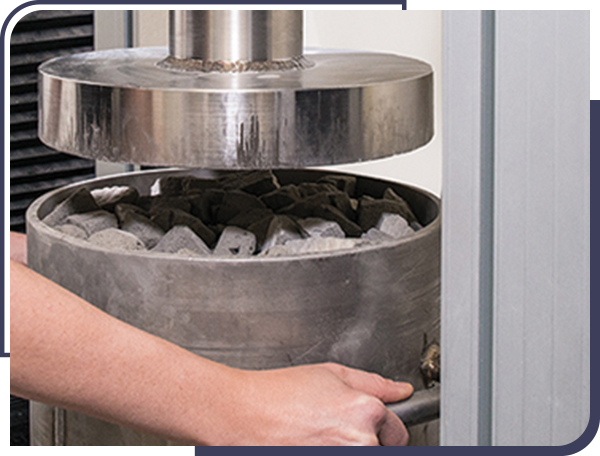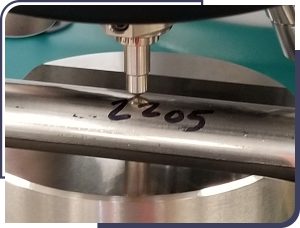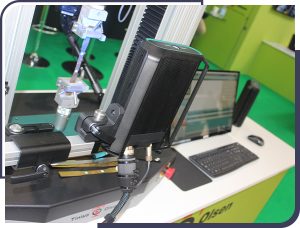Sustainable Alternatives Gain Validation Through Materials Testing
The past few years have shown us that the world around us is finite and fragile. And we all play a part in its sustainability. There has been a push across several industries to develop inventive, forward-looking products and technologies, while maintaining a better balance with the environment for long-term global health.
With innovation comes the unknown. Will a newly developed material stand up to the defined ASTM or ISO standards or will the use of a different material in an existing application meet the required industry standard benchmarks? Standards exist to ensure product safety and quality, which is all for the benefit and protection of the end user.
Confidence in Material Innovations
As an industry, we are tasked with maintaining a level of confidence in the products and solutions being delivered, and standards are an important aspect of that. There are many promising examples of sustainable products that incorporate recyclable or biodegradable materials and also support an eco-friendly environment. But to be able to confidently put these innovations into the mainstream, companies still rely on materials testing to known industry standards and specifications.
Material testing provides the insight to gauge the useability of certain materials and products in specific environments. And in the world of eco-friendly material innovation, it has helped lay the groundwork to develop solutions beyond just delivery of a product, but also to help combat climate change, to increase types and quantities of materials that can be recycled, and ultimately open doors to innovations that are solving some real-world challenges.
Recycled Glass Aggregate
The collapse of I-95 in Philadelphia, PA seemed, at first, catastrophic. Initial calculations framed the road closure in years, then possibly over several months. So who would have thought that in a mere few weeks, this massive roadway connecting a large swath of the eastern United States would be up and running after such an epic event, using a sustainable material made from glass.
Recycled glass aggregate is not new. Formed by crushing glass into a powder, blending it with a foamy slurry, heating it and then breaking it into briquettes, the crushed aggregate is used in a number of construction applications, including as backfill or in roller applications. The size, shape, density and strength of the aggregate all affect its long-term performance in pavement and structures.
Testing of the ultra-lightweight foamed aggregate is critical to prove its efficacy and ensure it has the strength needed to bear the weight and force of heavy-duty construction. It also confirms that the aggregate is composed of a good mix of chemicals and materials that can compact to and withstand a certain force. Thanks to testing performed using Tinius Olsen equipment, the company developing the aggregate already had the results and data to know this aggregate could serve as the backfill for the temporary lanes constructed along the highway corridor.

Figure 1: Testing of the aggregate is carried out with Tinius Olsen equipment.
Sustainable Wool Rope
Seaweed farming itself is not only a sustainable source for fertilizer, bio-ethanol and livestock feed, but it helps negate carbon and nitrogen levels in the ocean as well as provides a healthy ecosystem for marine life. So the fact that non-recyclable, everlasting polypropylene rope is laid on the sea floor to grow the harvested seaweed counterbalances the environmentally-friendly aspects of growing a renewable resource. And this plastic rope is washing up on coastlines across the globe, rubbing against rocks, resulting in a hard plastic crust coating the coastlines.
But what if the rope was made of biodegradable wool that itself is sustainable and renewable. Would its physical properties still hold up as needed in the corrosive saltwater environment? Tinius Olsen is helping to answer this question.
Manufactured in a range of diameters, from small lengths to full coils, all of the wool rope currently produced is from local farms and craftspeople in the United Kingdom. But this paradigm shift for seaweed farming needs validation and is being accomplished through materials testing. By relying on proven equipment Tinius Olsen is helping to identify the proper breaking strain as well as design the special grips needed to hold the rope for proper testing.

Figure 2: The sustainable rope is used to farm seaweed and shellfish
Testing of Eco-friendly Innovations
In the world of materials testing, manufacturers turn to industry standards to enable them to validate, qualify and prove the viability of their products and raw materials. For materials pushing the envelope of what is known and acceptable, testing to a defined set of compliance levels becomes even more critically important.
Developing sustainable material alternatives and bringing them to market is no small feat. Testing validation is just one aspect of this process. Also of importance is a partner invested in the success of innovative product development and who has the technical knowledge and pedigree to deliver quality testing equipment to validate your product innovations.



